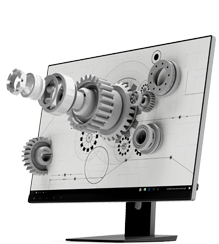What are the characteristics of projected capacitive technology?

What are the characteristics of projected capacitive technology? Compared to surface capacitive touch screens, pro
What are the characteristics of projected capacitive technology?

Compared to surface capacitive touch screens, projected capacitive touch screens are typically used in smaller screen sizes. The internal structure includes a circuit board integrated with an IC chip for data processing, many transparent electrode layers with specified patterns, and a surface covered with an insulating glass or plastic cover plate. When the finger approaches the surface of the touch screen, the electrostatic capacitance changes simultaneously between multiple electrodes. By measuring the ratio between these currents, the contact position can be accurately determined.
There are two induction methods for projected capacitive technology: grid format and line sensing. The human body is able to conduct electricity because it contains a large amount of water. When the finger approaches the pattern of the X and Y electrodes, a coupling capacitance will be generated between the finger and the electrode. The coupling capacitance will change using the electrostatic capacitance between the X and Y electrodes. By detecting which position of the electrode's electrostatic capacitance changes, the touch sensor can detect the specific touch point.
Technical features:
◆ High durability
◆ Long lifespan, as there are no moving parts during operation
◆Sensitivity can be adjusted. If the sensitivity is set very high, the touch screen can even be operated without touching or using a plastic cover. The cover plate can also provide additional protection and various flexible structural designs
◆If sensitivity is increased, glove wearing operation can also be supported
◆ Has excellent optical properties ◆ Reacts to very light touches and does not require sensing actual physical pressure ◆Touchscreens are usually designed together with control ICs
◆Due to its detection method, capacitive touch screens are susceptible to electrical noise
◆interference, especially from LCD, which can be more pronounced.
◆Accurate matching of patterns is required, resulting in higher production costs










